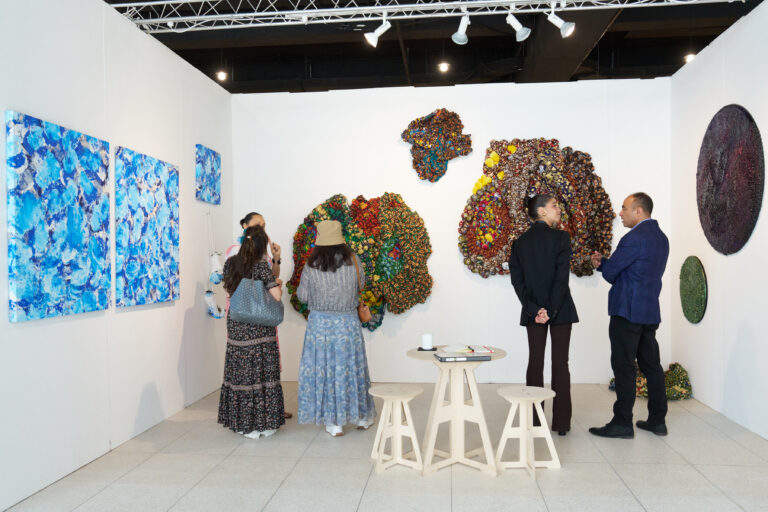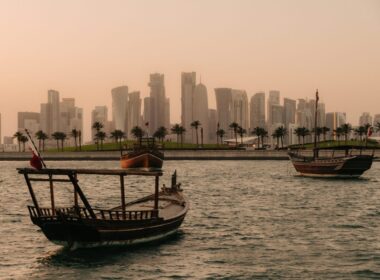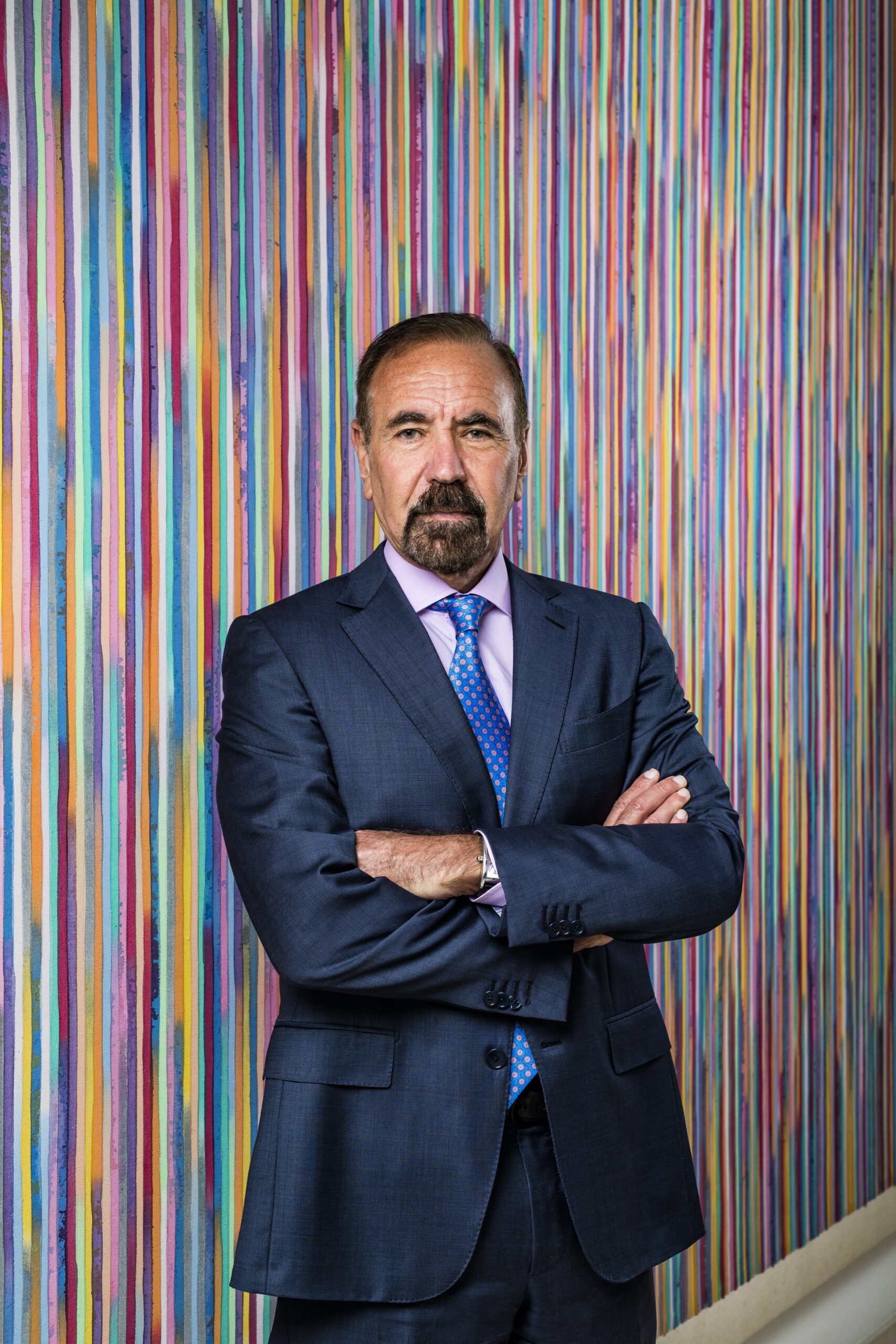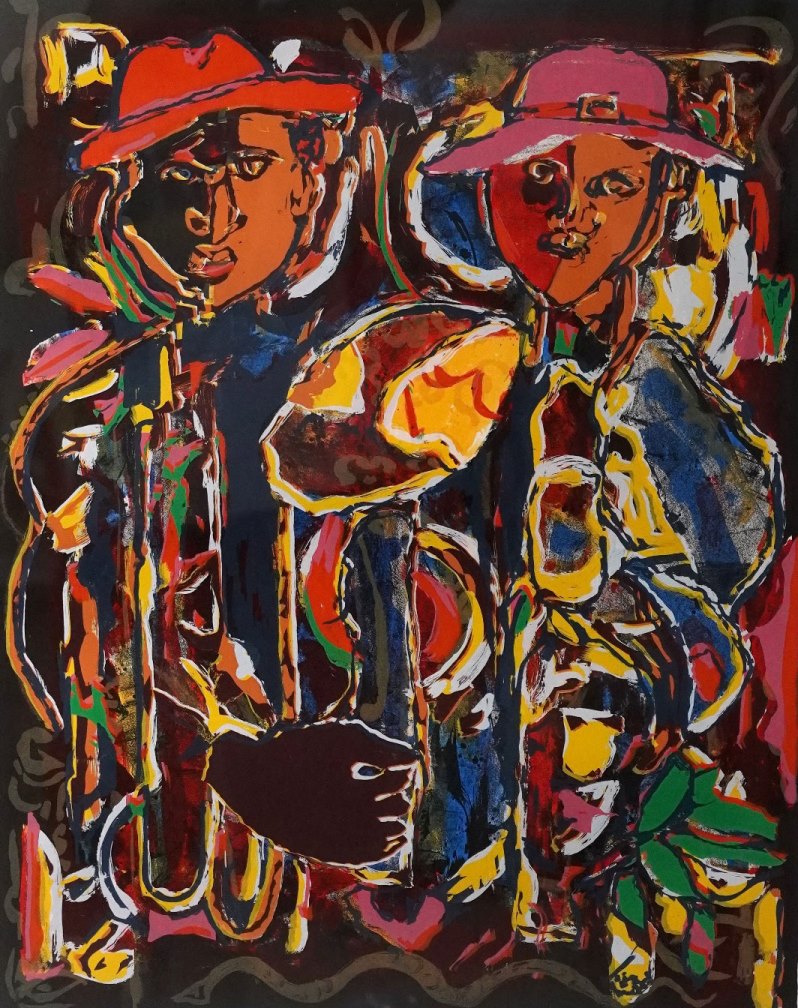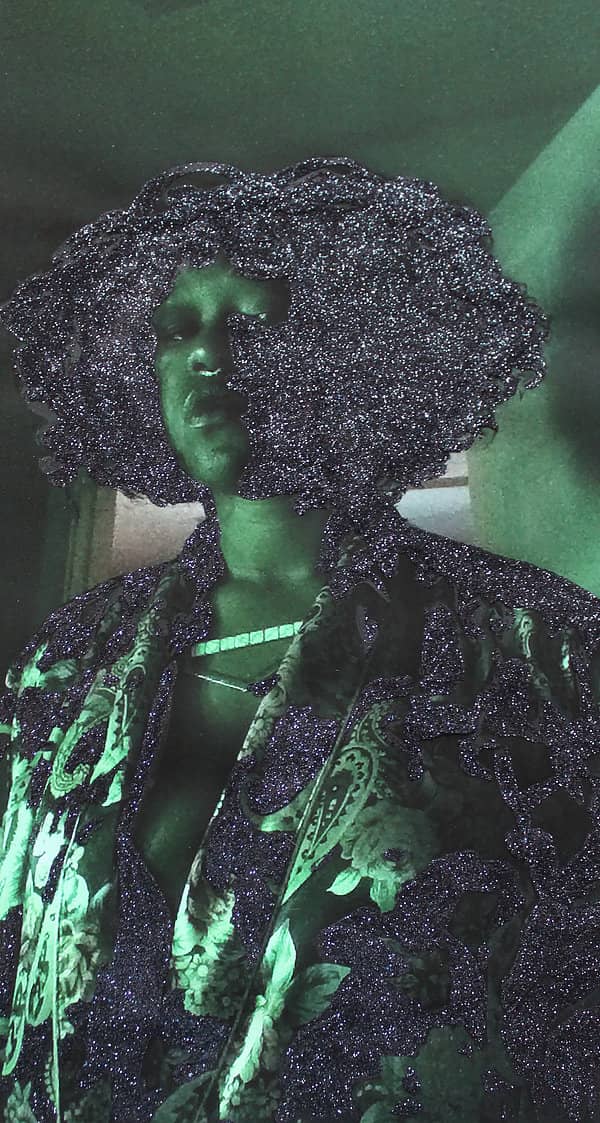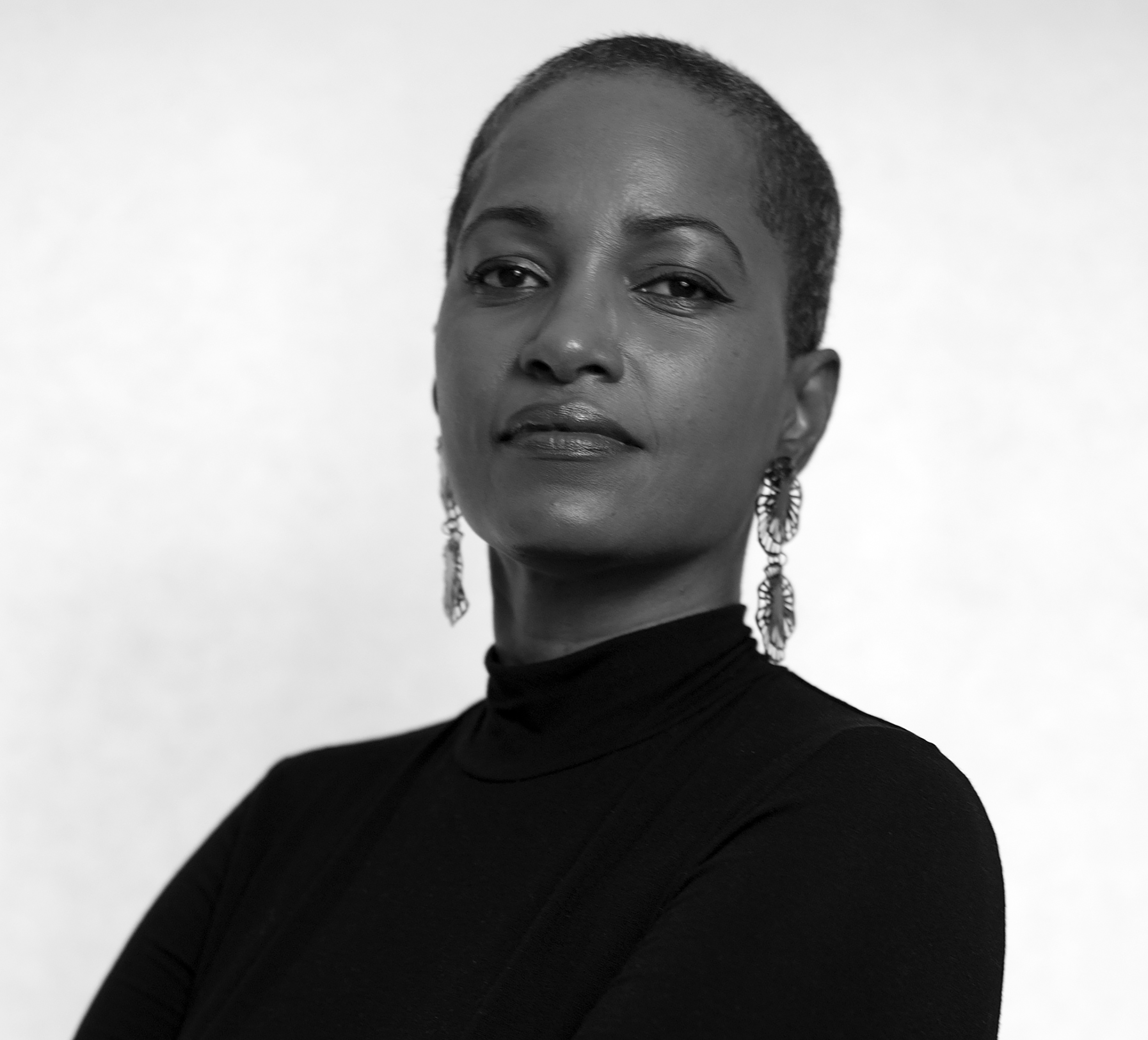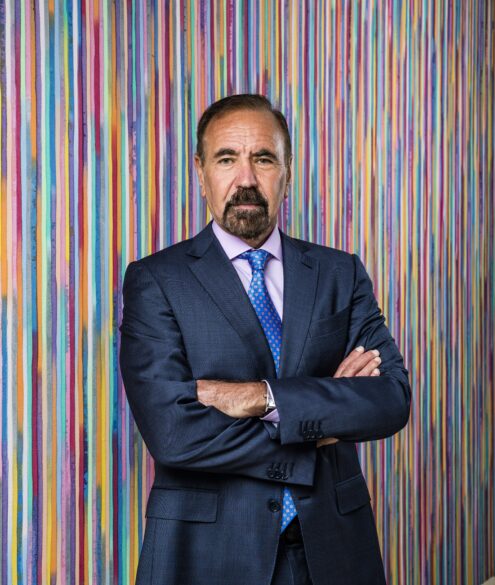
Above: Jorge M.Pérez
Before donating $20 million worth of Latin American art to the Pérez Art Museum Miami (PAMM, previously known as the Museum of Art Miami), Jorge M. Pérez was born in Argentina to two Cuban parents where he, later in his adult life, moved to Miami and made a name for himself in real estate. Pérez started collecting art as a way to stay connected to his culture.
With time, he transferred from collecting exclusively Latin American art to collecting art from BIPOC artists. These efforts inspired Pérez to open a contemporary art space, El Espacio 23. El Espacio 23 produces annual exhibits drawn from the Pérez collection to “create a space that ignites dialogue on key social matters.” Perez’s biggest focus with El Espacio 23 “is ensuring the best pieces in his collection can be enjoyed by the community for free, so that it can positively impact others in the same way art has impacted him.” Currently on view at Espacio 23 is Witness: Afro Perspectives from the Jorge M. Pérez Collection. Guest curated by Zimbabwean curator Tandazani Dhlakama, Assistant Curator, Zeitz MOCAA, in collaboration with Pérez Collection curators Patricia M. Hanna and Anelys Alvarez, the exhibition includes over 100 works by African and African Diaspora artists. Addressing themes of systematic oppression, intergenerational trauma, syncretism, identity and territory.
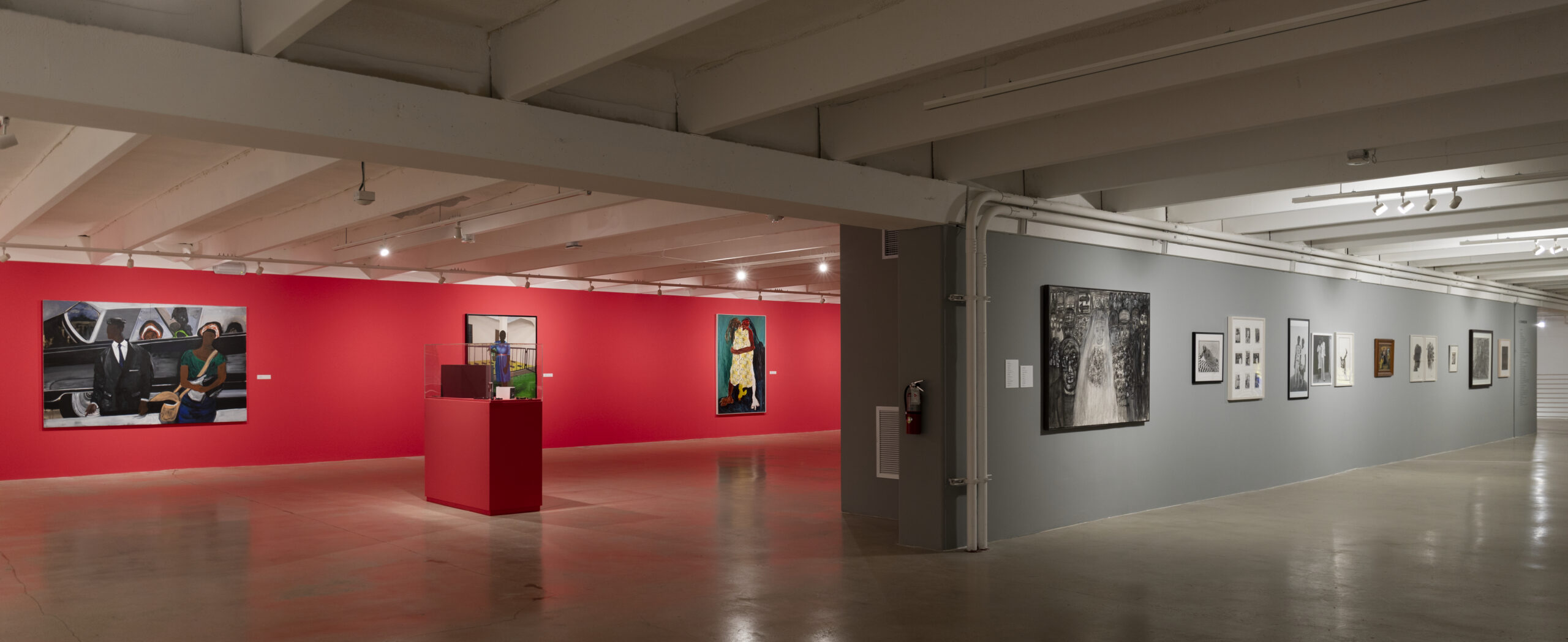
Above: Install view of Witness: Afro Perspectives from the Jorge M. Pérez Collection.
Kendra Walker: Tell me about your early life, childhood, your parents.
Jorge M. Pérez: I was born in Argentina to Cuban parents and moved to Havana at the age of eight when my family repatriated. To our surprise, the Cuban revolution kicked off just six months later, forcing us into exile in Bogotá, Colombia.
Despite having to start from scratch, those were happy times for the family. Some of my fondest memories are of my mother taking me to many art museums in the city. She often had to drag me, but looking back at it, it was these visits that instilled my love for art.
I was fortunate in that my parents emphasized hard work while ensuring my brother and I valued the beauty of art and literature. That balanced perspective was key in making me who I am today and is a value I’m passing down to my kids and grandchildren.
KW: How did you get started in real estate?
JMP: I had a somewhat unexpected path to real estate development. After graduating high school, I spent some time in Europe, where I fell in love with city living. There was something about the rich urban fabric that really spoke to me—there was great art, amazing food and diverse people all in the same place.
I brought that passion with me when I moved to Miami in the early ‘70s and started a position as a city planner for the City of Miami, working mostly on low-income housing.
Very quickly, I saw the demand for affordable housing development in the area (yes, even back then!), and partnered with a good friend and former competitor to establish Related Group in 1979.
We were young, ambitious and totally altruistic, looking to change the world for the better. I was working what seemed like 24 hours a day, but I can confidently say it was all worth it. It feels great to know the mission I set out to accomplish with this company remains the same 40 years later—to “build better cities,” and to give everyone a place they are proud to call home.
KW: What year did you start collecting art and why? What did your life look like at the time you started collecting art?
JMP: My mother ingrained in me an enthusiasm for art and culture from a very early age. She’d take me to the best museums throughout Colombia, Argentina and Cuba, and while I didn’t know it at the time, these day trips laid the foundation for a lifelong love of appreciating and collecting art.
As I got older, my passion for collecting began out of a desire to stay connected to my homeland. After I finished school in the U.S., I had a lot of nostalgia for my roots in Latin America, so I used art to transport me there. It was a way for me to reconnect with the culture of my parents and my parents’ parents. In fact, in my first 20 or so years as a collector, I focused almost exclusively on Latin American art.
KW: Were any of your peers collecting art at the time? What were their (the people around you) opinions on art?
JMP: When I started collecting, I remember many of my friends and peers were also beginning to collect. Each had their motivations, of course, but I recall many of them doing it as a way to reconnect with their Latin American heritage.
I remember going to New York during auction season and having incredible conversations with artists and collectors. Throughout my life, this has become my preferred approach to collecting, always initiating and cultivating lifelong relationships with artists, galleries, institutions and collectors from around the world.
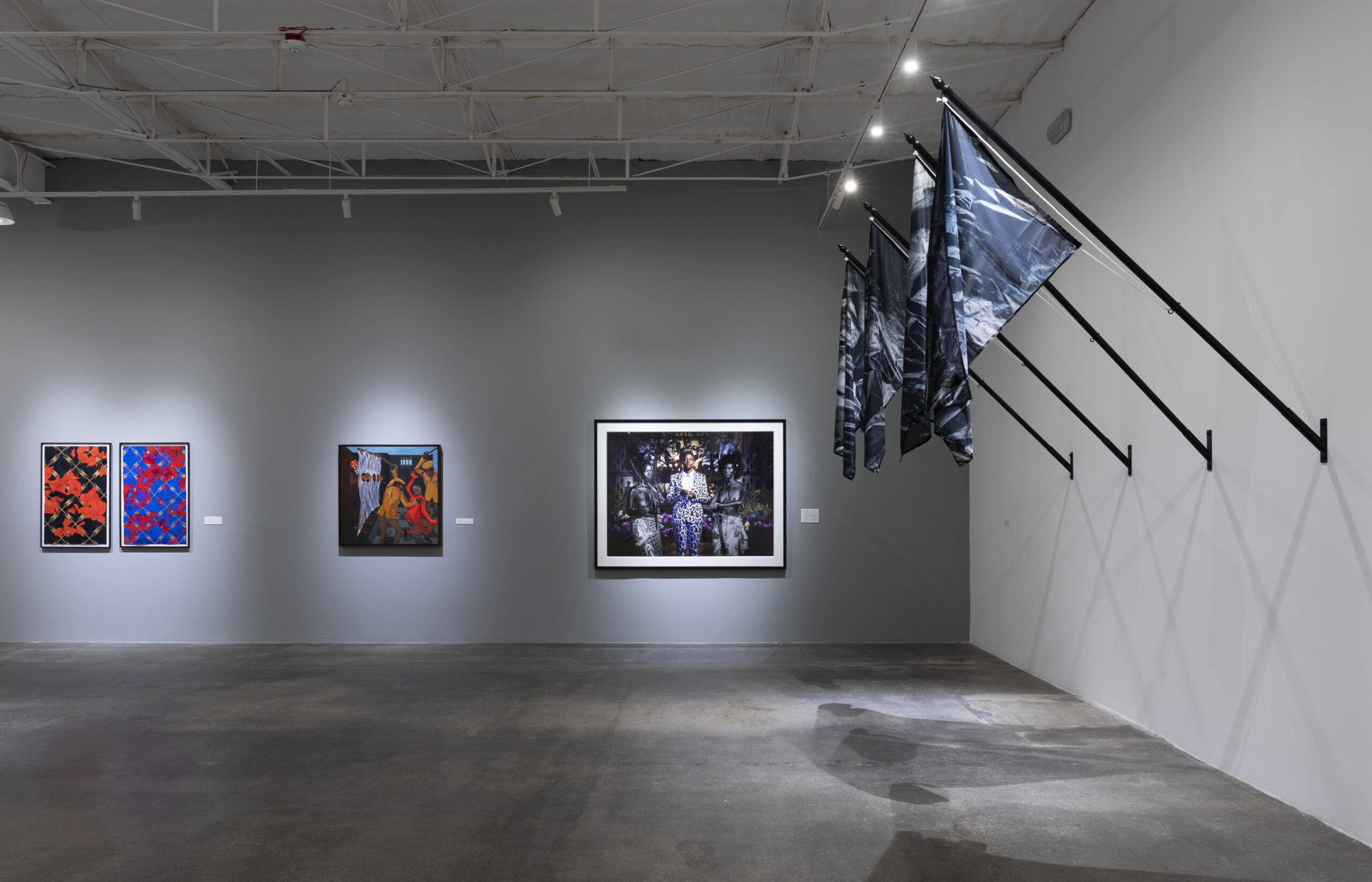
Above: Install view of Witness: Afro Perspectives from the Jorge M. Pérez Collection
KW: At what point did you realize you were a collector?
The moment I bought my first piece. There was just something about seeing the work on my wall and being able to live with it and evolve my thoughts around it day by day.
I continue to feel that passion to this day, and while it is extremely difficult to part with certain pieces once they are donated, I do so gladly, knowing they are going to enrich the lives of many.
KW: How do you think your profession has affected the way you view the world and collect art?
JPM: In my 50 years of collecting and developing real estate, I’ve learned that at the core of all of the world’s great cities is a thriving community of artists and creatives. I’ve also seen that art has the power to completely transform neighborhoods and give a voice to those who are otherwise underserved.
As a real estate developer, these points are always top of mind, which is why we infuse every project—no matter the price point—with museum-quality art. We also work with local nonprofits, through our various foundations, to create programs that support and nurture the next generation of creatives.
KW: Did you have a mentor or guide, on how to collect and maneuver in “these” spaces?
JMP: I’m lucky enough to have an incredibly talented team of curators by my side—Patricia Hanna and Anelys Alvarez. Both of them are experts in their own right and have been integral in helping me establish and grow the collection to what it is today.
Of course, I also make it a point to educate myself. In fact, I try to read at least two hours every morning before starting work to sharpen my instincts and discover new artists and styles. It is important to note that I never buy art as an investment, so I will often trust my gut instinct and move forward with works where I feel some kind of emotional tie or strong personal connection.
Specifically for my art space, El Espacio 23, this approach to collecting gave us an incredible breadth of pieces to choose from, which is in turn what helped make the shows so powerful and diverse.
KW: What was the first piece of art you collected?
JMP: I actually acquired my first piece of art with the winnings from a dorm-room poker game. With my first few payouts, I bought works by Marino Marini, Joan Miró and Man Ray—works I still have to this day.

Above: Install view of Witness: Afro Perspectives from the Jorge M. Pérez Collection
KW: How do you think we can make the art world more inclusive?
JMP: That is an incredibly important question and one without a single right answer. That said, I believe strongly this should be a priority, given art’s ability to serve as a bridge between people of disparate backgrounds and beliefs. Art, no matter the medium, can also ignite one’s imagination and spark new ideas.
Collectors play an incredibly important role in this. Not only should the collector community support emerging talents, but we should all be serving as patrons of our local institutions, helping foster a diverse approach not only in collections but in their ongoing programming.
This is why we opted to make El Espacio 23, our experimental art space in Allapattah, open and free to the public. The large-scale murals and other forms of public art we incorporate into Related Group’s projects are also a huge part of showing art to those who aren’t often exposed to it.
One of my favorite recent examples is the massive work by El Mac that adorns the entire side of Wynwood 25. The piece, which showcases three kids the artist met in Wynwood over 10 years ago, was done by hand and can be seen for miles and miles.
KW: Why did you pick PAMM to donate your work to?
JMP: Every city needs a great art museum, and I felt strongly about helping PAMM be that institution. Of course, this being Miami, it was only right the museum served as a true representation of the city’s diverse residents, showcasing works from across the Latin and Caribbean spectrums, as well as the entirety of the African diaspora.
Much like art continues to be a strong link to my family and my culture, I wanted to ensure everyone in South Florida had the opportunity to connect with their heritage.
KW: What are your five-year and 10-year goals for El Espacio 23?
JMP: My biggest focus right now is ensuring the best pieces in my collection can be enjoyed by the community for free, so that it can positively impact others in the same way art has impacted me. After all, art reminds us of where we came from which, in turn, guides us to where we’re going.
Having rotating exhibits at El Espacio 23 on a yearly basis allows me to fulfill just that. We also want to continue offering a space where art ignites much-needed dialogue on key social matters, no matter how experimental or provocative, and also to continue supporting emerging artists through our ongoing residency program.
In the future, we hope to see El Espacio 23 become a young PAMM, similar to the dynamic between PS1 and MoMA. This would serve as the perfect place where younger, up-and-coming artists can be exhibited and celebrated.
KW: Why do you think there isn’t much diversity in the arts? / How do you think we can get more children of color in the arts?
JMP: Unfortunately, many pockets of our community, especially those in low-income BIPOC neighborhoods, do not have equitable access to the arts or programs that support arts education. That is why I made it a mission to create programs, like The Jorge M. Pérez Family Foundation’s CreARTE grants program, that aim to advance arts equity. I continuously look for opportunities to financially support diverse artists of all ages and provide arts education and other arts programming to communities that are traditionally underserved by the arts.
KW: What is the hardest lesson you learned as a collector, and what advice do you have for new collectors?
JMP: One of the biggest lessons I’ve learned is to follow my gut and buy only what I truly love. It can be so easy, especially for those just getting started, to get caught up in financial appreciation and overall hype—but ultimately, the only factor that truly matters is whether or not you really love a specific piece.
